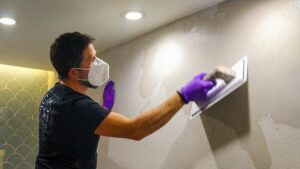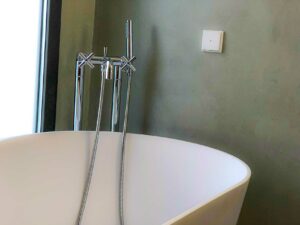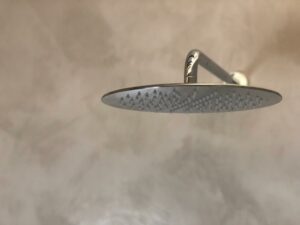
Surface Treatment for applying Microcement
Preparation of the Substrate for the Microcement Types of Substrates to Apply Microcement MICROCEMENT SUBSTRATE – One of the great advantages that microcement has compared
MICROCEMENT and TILES – When it comes to floor and wall coverings, tiles have been the traditional choice for decades. However, in recent years, serious competition has emerged in the form of microcement. This modern and versatile material is quickly gaining ground in the world of interior design and construction. In this post, we will show you why microcement can be a superior choice in many situations compared to traditional tiles.

One of the main advantages of microcement is its ability to adapt to a variety of surfaces. While tiles require a level and rigid base, microcement can be applied over existing surfaces, saving time and preparation costs. This versatility makes microcement perfect for renovating spaces without the need to remove previous coverings.
One of the biggest problems with tiles is visible joints that can disrupt the uniform appearance of a surface. Microcement has no joints or gaps, creating a continuous and elegant surface without visual obstacles. This is especially valuable in small spaces, as microcement can make a room appear larger and more open.
Tiles often require constant maintenance to prevent joints from becoming dirty or deteriorating. Microcement, on the other hand, is easy to maintain. Simple regular cleaning is enough to maintain its original appearance, and you won’t have to worry about cleaning dirty joints or repairing cracked tiles.
Microcement offers a wide range of color and finish options. You can completely customize the look of your space according to your aesthetic preferences. From an industrial and modern look to something more rustic and warm, microcement fits any style.
Microcement is surprisingly durable. It is resistant to scratches, bumps, and abrasions, making it an ideal choice for high-traffic areas. Unlike tiles, which can chip or break, microcement stays solid and resilient over time.
Microcement is a naturally warm material to the touch, making it a comfortable choice for spaces where temperature is an important factor. Unlike tiles, which can feel cold, microcement is pleasant underfoot and brings a cozy feel to the space.
Installing tiles can be a long and complicated process, especially in large areas. Microcement is applied faster and without the need for expansion joints. This means less construction time and less hassle.
In short, microcement offers a number of advantages over traditional tiles. Its versatility, easy maintenance, durability and customizable aesthetics make it an attractive choice for interior design and construction projects. As trends evolve, microcement has become a modern and elegant alternative to tiles that is worth considering for your next project.
To learn more about the world of seamless coatings, visit our Lunik website.

Preparation of the Substrate for the Microcement Types of Substrates to Apply Microcement MICROCEMENT SUBSTRATE – One of the great advantages that microcement has compared

Microcement and Plasterboard Plasterboard and Microcement: Great Result PLASTERBOARD AND MICROCEMENT – Plasterboard, a widely used material in construction, has gained popularity in recent decades

Microcement and Moisture Humidity and Microcement: Ensuring a Perfect Application MOISTURE AND MICROCEMENT – Humidity is one of the primary challenges when applying microcement. While